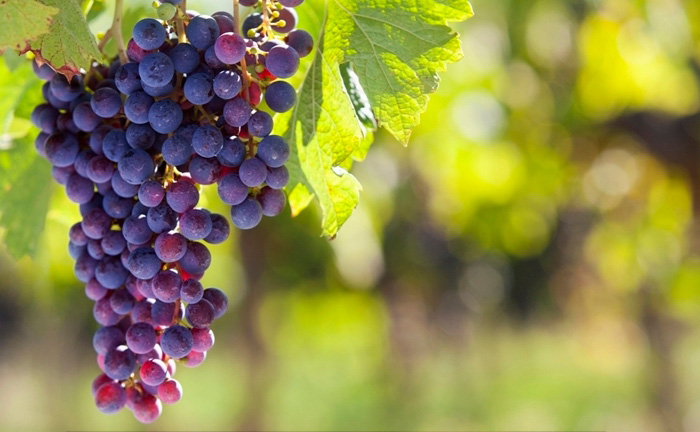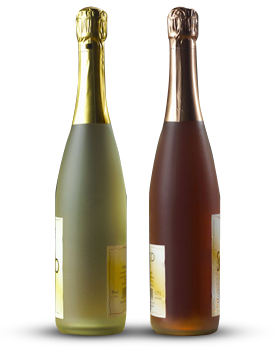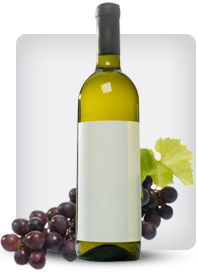

Tag: Wine
Wine Tasting In Malaga
Posted onMalaga is one of the cultural centres of southern Spain and it bequeathed to the world flamenco dance, cubist art and some very tasty wines. You can enjoy sweet Spanish wines when you go wine tasting in Malaga and they are the perfect accompaniment to all tapas.
Wine has been produced in Malaga for centuries by various peoples including the Phoenicians and the Moors. Despite being Arabic and forbidden by their religion the Moors were even enticed to produce and drink wine. Along with fantastic Moorish architecture it is one of the legacies which they have left to Malaga.
Most Malaga wines are made from the Muscat grape but they can also be of the Pedro Ximenez variety. They tend to be very rich with an earthy taste. Visitors to this part of Spain can visit a number of attractive and interesting Bodegas including the Antigua Casa de Guardia in the mountains of Malaga. Located high up in Axarquia amidst groves of fig trees, this is an award-winning winery which has been favoured by Isabel II, who was once Queen of Spain. In honour of her visit the Moscatel Isabel II wine was named after her. The Antigua Casa de Guardia is the oldest bodega in Malaga having been founded in 1840 and the wines are kept in oak casks.
This is just one of many worthwhile testing destinations within the Sierra Nevada and if you want to find out more about wine production in the area then the Mijas Wine Museum is the place to go. Located in San Sebastian, it is open all year around and offers introductory courses to Spanish wine as well as regular tasting sessions.
The Malaga Wine Museum
Within the province of Malaga is the town of Marbella which started life as a small fishing village and has many wine bars that serve tapas. Near to Marbella in Ojen is the Malaga wine Museum.
More than 20,000 tourists go to the museum every year and the surrounding area is where many of the best Malaga wines were created. Indeed the museum itself is a restored distillery. In the 19th century a brand of snaps was first made here which was named after its creator Pedro Morales as Pedro Morales Aguardiente de Ojen.
Malaga Restaurants
When considering which wines to drink is important to take into account what you are eating. Malaga is a seaside city in the south of Spain which has a fantastic range of local food and restaurants.
These restaurants include the famous Chiringuitos, which are beachside bars or taverns that serve freshly-caught fish. Malaga has some white wines that will go well with the catch of the day.
If you want to drink world-class wines in a star-studded setting then visit La Posada de Antonio, a restaurant which is owned by actor Antonio Banderas. The chef there prides himself on serving authentic Spanish food in conjunction with an intriguing wine list. The grilled meat and tapas are both recommended.
Learn the Best Health Benefits From Drinking Red Wine
Posted on
Isn’t it wonderful to finally find out that something we like is finally good for us. There have been many articles written recently about the health advantages of drinking red wine. The news people have started calling this phenomena the French Paradox. We all know the French eat diets filled with rich sauces and eat food products rich in creams butter and cheese but yet these people seem to live longer. Through research it has been found that they have a lower incidence of heart disease. Why we may ask? The final result has been thought to be the red wine they drink. In this article I will highlight the benefits of drinking great wine.
Get Free: Wine Health Benefits
First, Researchers have found that wine lowers the cholesterol by changing our blood lipid levels. Wine also makes it very difficult for blood to clump up in our blood vessels to form clots. If there are already clots it may help to dissolve them preventing our risk from stroke. If wine is drunk in moderation it can lower blood pressure. Some studies even went as far as to say red wine can lower our insulin levels. But do keep i mind these researchers are saying yes it is healthy to drink some wine in moderation, but an excess of drinking can cause many issues that will out weigh the good it does.
How to Find: Information About Wine
Secondly, red wine can be a good source of anti-oxidants. It is hard to watch TV without seeing the advantage of aniti-oxidants that are found in fruits. Another benefit from great wine is that doctors have found that it can reduce stomach ulcers.
Third, red wine does not suppress the immune system as does many other alcoholic beverages tend to due. Too much other alcoholic beverages tend to increase our risk of getting sick.
Fourth, red wine has also been found to increase bone mass. This is especially a plus for women who tend to have issues. With so many women fearing the consequences of Osteoporosis red wine could be a pleasant remedy.
Lastly, with the stressful lives all of us live today, and the scientific research that has done drinking 1 to 3 glasses of wine may be just what we need to keep our bodies healthier. It heals both the body and the soul.
More Red Wine Articles
Thanksgiving Wine Picks
Posted onAlong with that glorious Thanksgiving feast, another critical consideration is the wine that can accompany the meal. Here are some top picks of white wine for Thanksgiving drinks to make that meal go down sweeter and smoother. White wine is the customary accompaniment to white meat.
Chardonnay
This wine that leaves a multi-layered taste of different fruits will make a wonderful accompaniment for that turkey and fruit-flavored stuffing and sauce like that made with cranberry. A full-bodied, well rounded very good Chardonnay will incorporate tastes of citrus, perhaps apricot and other lush fruits.
Beaujolais Nouveau
This is another favorite for Thanksgiving dinner. It’s normally the very initial vintage to be released. Beaujolais Nouveau comes from the Gamay grape which has thin skin and really little, if any tannins. It has a light, red fruit flavor and just a hint of banana taste. Its lightness indicates one can appreciate it at the table with the food and still get pleasure from a stronger or totally unique after-dinner Thanksgiving drink.
Riesling
This white wine is offered as very dry or medium which is fairly sweet. Either way, this wine is fantastic with Thanksgiving dinner thanks to its mix of fruit flavors like apricot and apple, the honey and clarifying acidity which goes well with herbs and fruit flavored turkey sauces such cranberry sauce.
Sauvignon Blanc
This 1 will go down well with a bite of turkey thanks to its citrusy taste that makes a good accompanying undertone to herbs within the meal.
Pinot Grigio
This 1 will please the palate when it combines with the taste of onions, garlic and herbs that will go into the primary dish and side dishes.
Gewurtraminer
This is one more white wine with an aromatic punch and a spicy undertone which will improve the taste of turkey and all of the herbs in it. Its an additional Thanksgiving favorite.
Find More Malbec Wine Articles
Tasting Time: In The Hot Summer Drink Red Wine Law – Wine, Wine – Food Industry – Kitchen Pressure
Posted on In the summer, Wine Can only be air-conditioned room, Beverages It?
High temperature of 33 degrees Celsius under the drink taste of Spain Toro producing strong, Wine Up to 15% of the top fine Red wine With the hot summer around the same table to eat hot pot not seasonal. To eat drink readily, most need a really high-tonnage air conditioners. However, the most sensible, and more Environmental protection Carbon reduction method, and perhaps both of these high-alcohol red wine has strong all incorporated into cellars, in the fall before the arrival of the first summer thirst quenching drink wine now! Yes, thirst quenching, a long forgotten world of wine taste value, in our increasingly hot planet, perhaps winemakers and wine makers began to seriously consider with the response to this problem. Is full of strong wine autumn and winter, please give me cool little wine bar!
In my experience, there is no other wine than from the Mo Seer Creek (Mosel) of Riesling (Riesling) Spirit A more refreshing. However, please do not misunderstand, I’m not talking super-high concentration of TBA is not rare is botrytis grapes Auselese, but the most ordinary common, the price is also very plain in Kabinette. Scent of flowers and fruits aroma with mineral and green lemon calm, low alcohol, slightly sweet and delicious, accompanied by mouth drops to flow continuously to the strong acidity, no air conditioner in the summer to drink icy cold the cup, the most refreshing is fun, extremely refreshing, after a drink, it is difficult not drink several glasses. As it is now such a hot season, and that is worth more than the ice in the refrigerator several bottles of wine, while definitely not over the top wine cabinet.
Addition to German-style Riesling, were not sweet, not too much oak Barrel Taste, fresh acid, the young fresh dry white wine of choice is the same in summer. Royal River from Sancerre to New Zealand Marlborough (Marlborough) The Sauvignon (SauvignonBlanc); from Alsace (Alsace) to Australia ClareValley of Riesling; Burgundy’s Chablis (Chablis), northern Italy, gray skin Snow (PinotGriggio), Spain, Galicia (Galicia) in the RiasBaixas, Austria GrnerVeltiner even from the hot Andalusian, is very delicate and detailed Manzanilla sherry. These are the summer will allow me to look forward to the arrival of the charming summer wine quickly.
Course, not only was cool and refreshing white wine, pink wine and sparkling wine is the preferred summer. In recent years, not sweet pink wine popular in the world after the international market can choose the type of pink wine suddenly many more. Except for a few more pink wine producing areas of production such as Long Valley, Provence and Tavel, there is now even had disdain pink wine producing areas of production and the winery also began to launch an IPO, which also includes many top Bordeaux Chateau, shows that the market demand is great. More frustrating is that now the Taiwan market is still very few pink wine.
Unimaginable, drinking red wine for summer, in fact, like a lot, but, most of them are stretch top, at least, not in the price is. Top of the wine refreshing because in addition to less often a strong addition of alcohol, the more important to pay attention to taste top wines structure, they must be able to durable storage, usually contain more tannin, and when the wine’s temperature is too low when it will become more astringent tannins more difficult to import, loss of balance to the top of the wine. Although no matter what type of wine, proper drinking temperature is not the 20 , so the temperature in the summer it is drinking slightly in pleasant for a little cold, but really cool for summer, the drink of the wine it can be re- ice point that, to be able to drop 12 , and even directly from the refrigerator out, the same can be very soft and easy to read, and the wine to be bold to taste even at low temperatures are pleasant as can a pure heart, not completely closed.
This wine tannins are very small, only being able to cold and will not appear too thin and stuck into the top, therefore, also less durable, the best take advantage of the fresh sweet taste of youth, early taste, after bottling After five or six years have passed after the usually the best time.
Wine Storage Refrigerator
Posted onWith everyone trying to find ways to be more economical, people have learned to find ways to enjoy quality times with friends, instead of spending large sums of money going out on the town. There are always good times to be had when you are able to enjoy a fine bottle with your friends.
Some people don’t see a reason to put their bottles in the refrigerator, and most might simply put the wine inside of a regular refrigerator. However, what many people don’t know, is that putting it in the refrigerator can ruin your bottle of wine. This is why you need to purchase a storage refrigerator.
Many are under the assumption that wine doesn’t go bad, because it’s an alcoholic beverage. This in fact isn’t true. While it’s true that it is an alcoholic beverage, it can and will go bad. It will go bad from the air, and from any mold and bacteria that might be floating around. So, how can mold and bacteria get into your bottle if it is corked? This is because corks breathe. This means that they allow air, and whatever is in the air into the bottle of wine. So, if someone has moldy or old food in the refrigerator, these bacteria and spores can find their way inside of your nice bottle of wine. Especially if it has been opened already, it will spoil. You’ll know it’s spoiled, because it will have a bad, sour, vinegar taste. In some cases, bad wine can make you sick. So to avoid this, be sure to purchase a storage refrigerator.
Another advantage of having a wine storage refrigerator, is that certain wines, such as white wine, are highlighted in flavor when they are chilled. A standard refrigerator is set for the temperature of your food. But a wine refrigerator will be specially designed, and temperature set to not only keep your bottle of wine fresh, but to also bring out the best notes and flavors. So it really is to your advantage to buy a storage refrigerator.
A wine storage refrigerator makes a nice gift for yourself, or for the wine enthusiast in your circle. Instead of waiting on line for an overpriced bottled of wine, you and your friends can enjoy perfectly chilled bottles right in your home, in your environment. You can set up events, such as wine tastings, or wine and cheese nights. Or, if you’d like to host something more intimate, you can create a dinner date that features wines that will have a wonderful flavor, because they were stored in a storage refrigerator. When you and your guest notice the difference in the flavor, and when you stop having to pour a good bottle down the drain, you will be very glad that you bought a wine storage refrigerator.
Related Zinfandel Wine Articles
popular posts
-

Top Northern Rhône Syrah 2025: A Vintage of Finesse and Structure
11-27 2025As the wine world turns its gaze towards the upcoming releases, the 2025 vintage from the Northern Rhône is already generating palpable excitement. For Read More
-

The world of wine is vast and can be intimidating. For enthusiasts and novices alike, wine subscription boxes have emerged as a premier way to explore new regions, varietals, and boutique wineries from the comfort of home. As we look ahead to 2025, the market is more sophisticated than ever, offering curated experiences tailored to every palate and budget. We’ve uncorked the top contenders to bring you the best wine subscription boxes of 2025. 1. Winc: The Personalized Pioneer
11-22 2025Winc remains a leader in the personalized subscription space. Their model starts with a detailed palate profile quiz, ensuring your first box is tailored Read More

